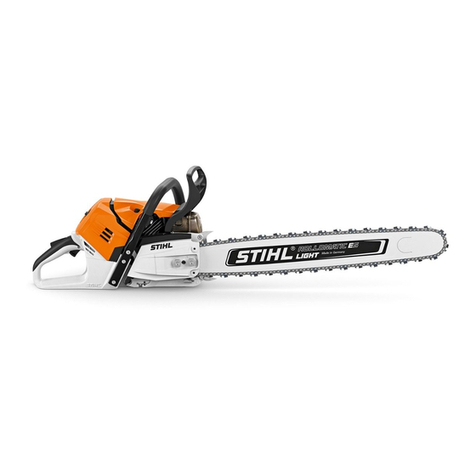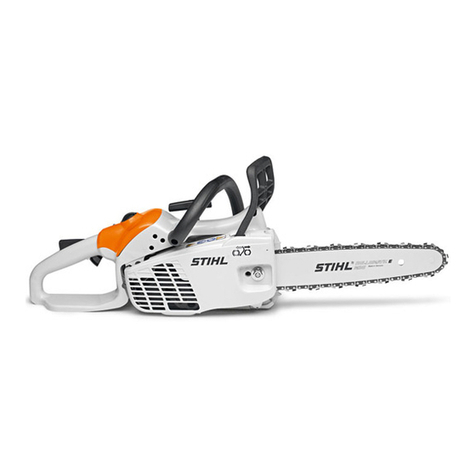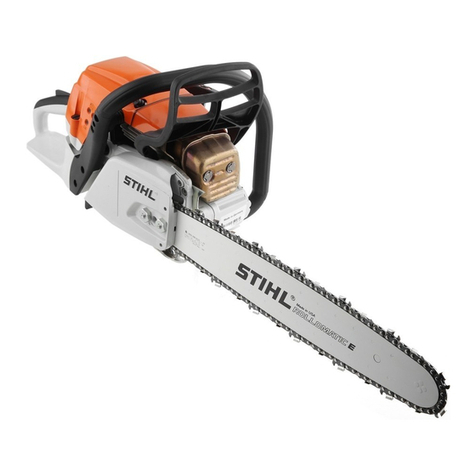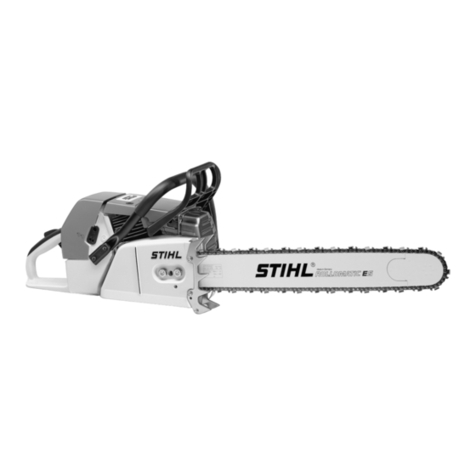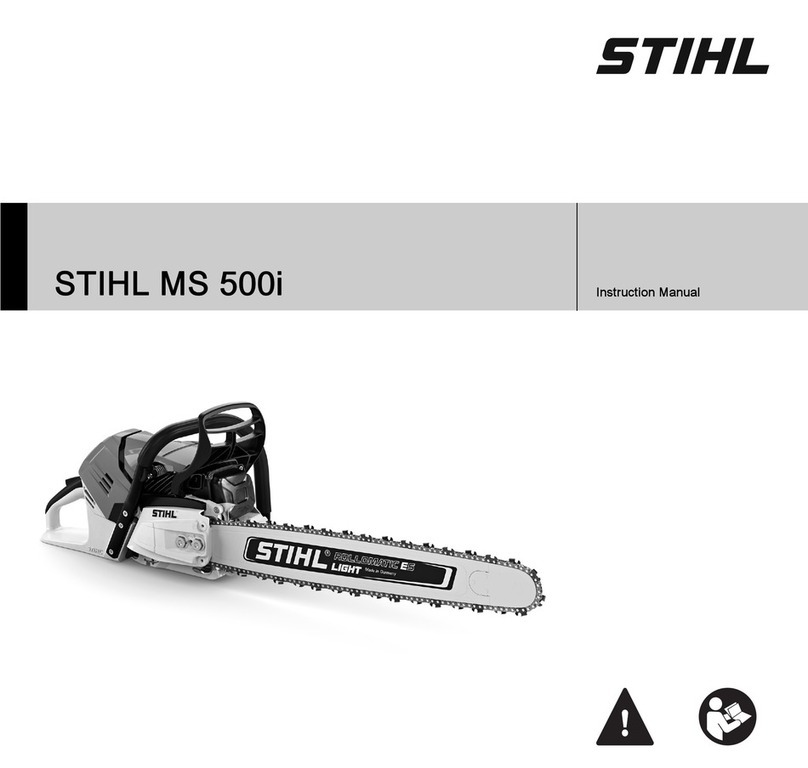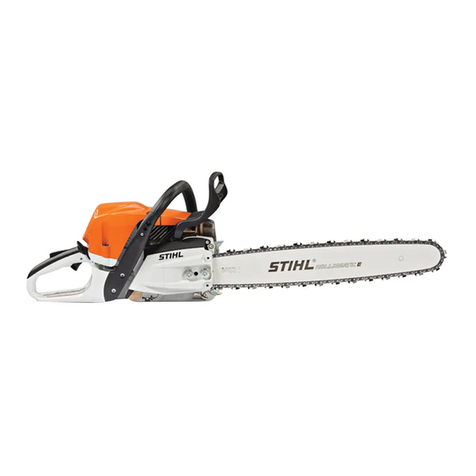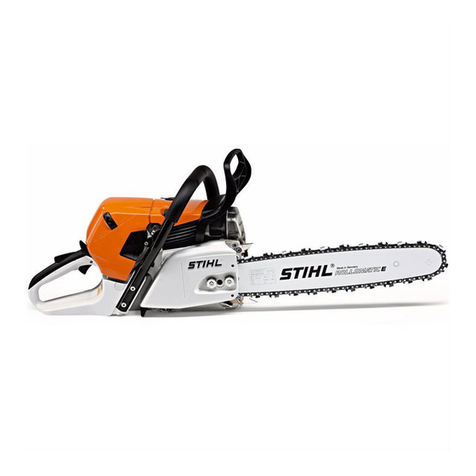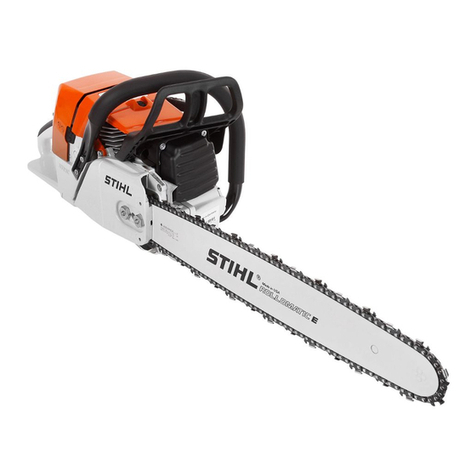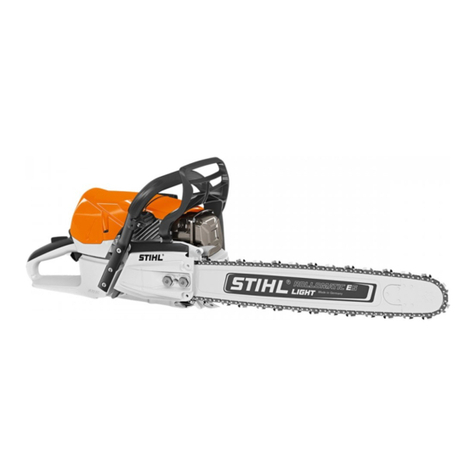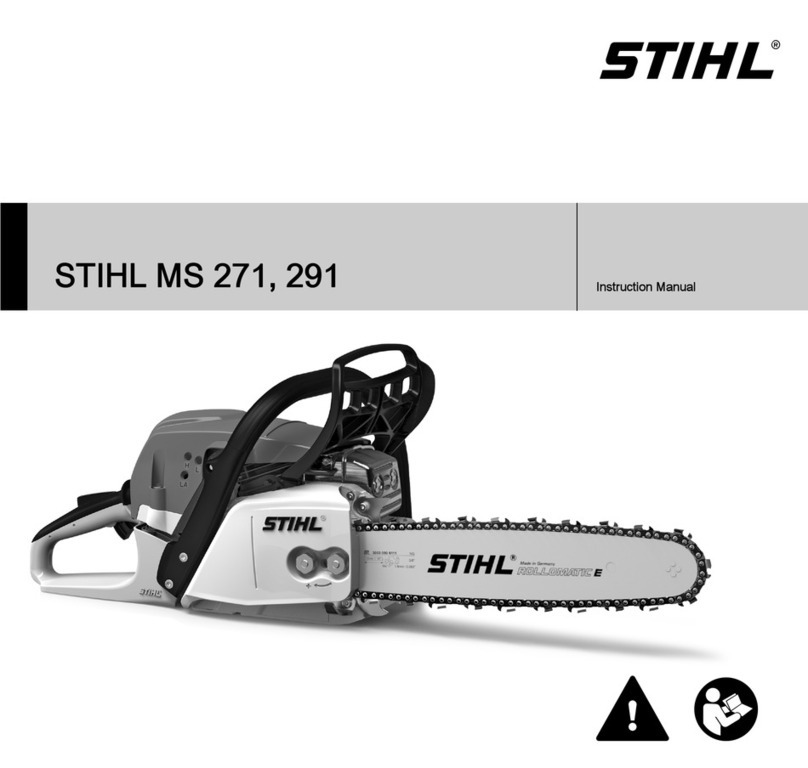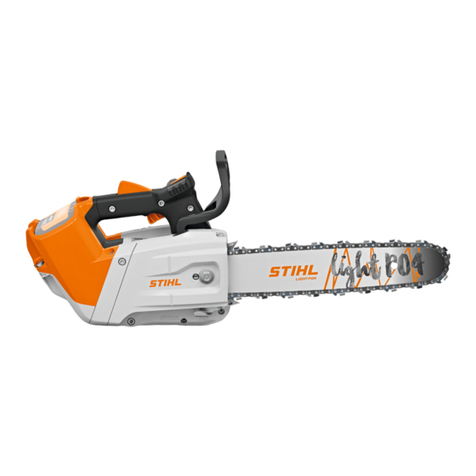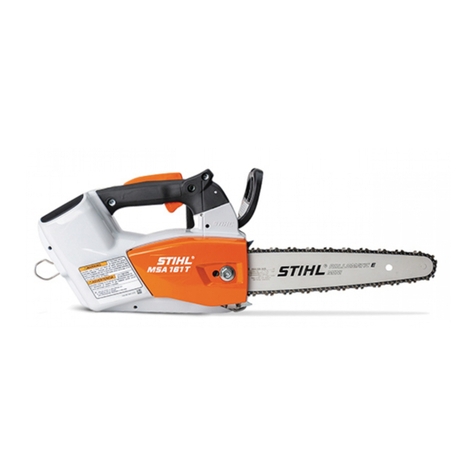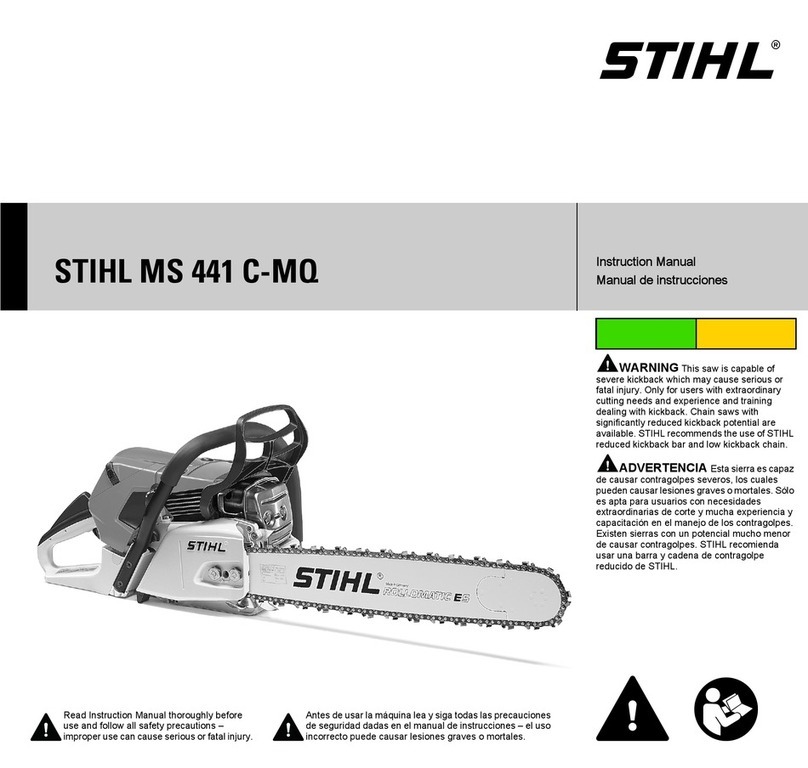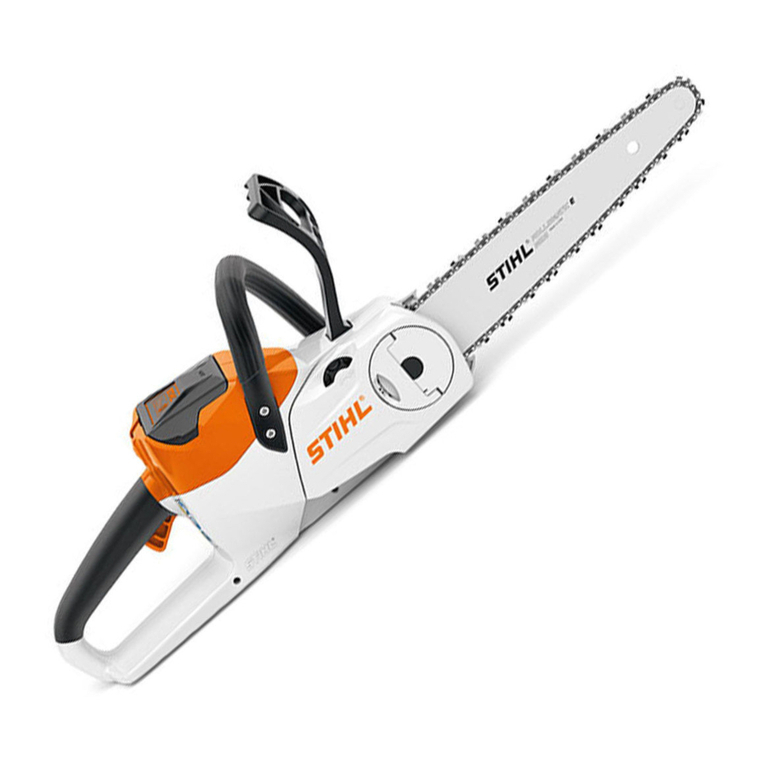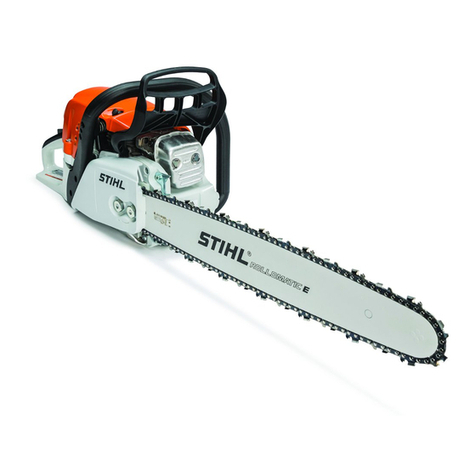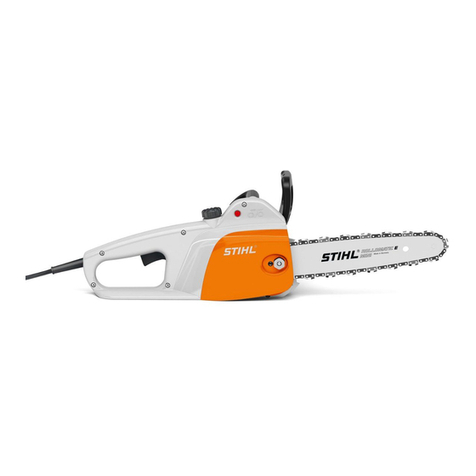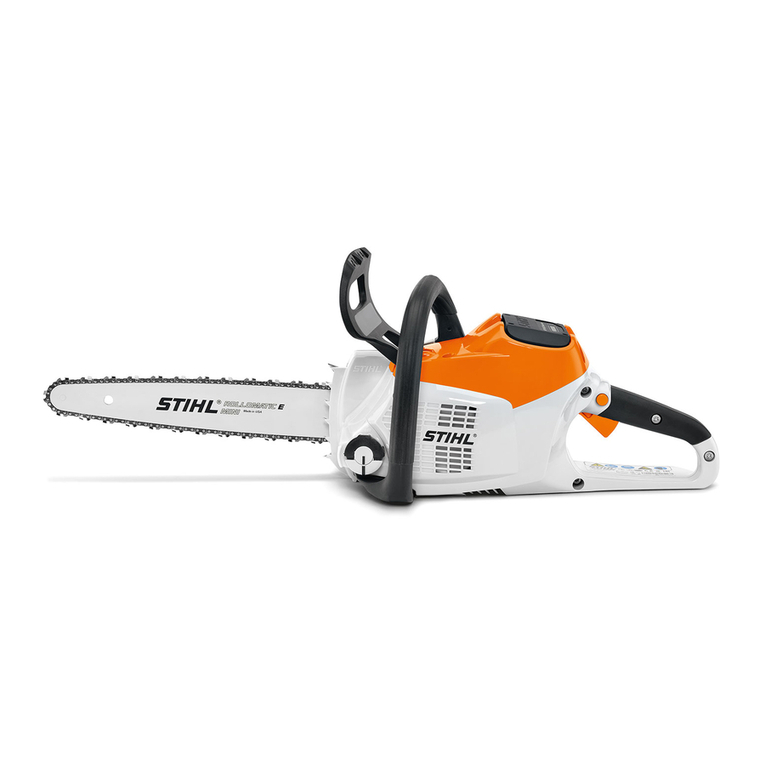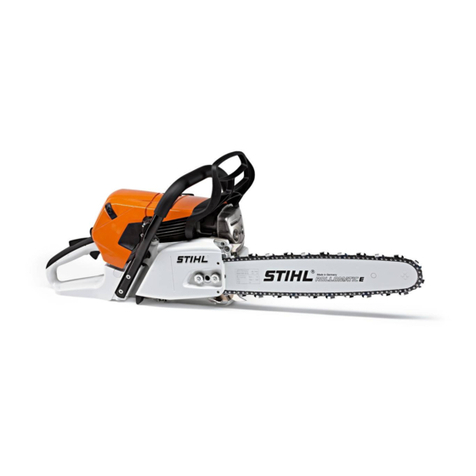
Page 6 Technical Information 11.2013
TI_11_2013_30_01_01.fm
6. Repairs
The STIHL MS 362 service manual is available for
servicing and repairs. Existing special servicing
tools are listed in the service manual and can be
used for this machine.
Note
Due to the momentary contact stop switch function
of the new Master Control Lever™, the ignition is
always switched on.
– This means the engine can start at any time if
the starter rope is pulled.
–To reduce the risk of fire caused by sparking
outside the cylinder, do not crank the engine
with the rewind starter when the spark plug boot
is disconnected or when the spark plug has
been unscrewed.
6.1 Troubleshooting
The STIHL MDG 1 engine analyzer can be used to
test the ignition module, control unit
(STIHL M-Tronic™) and connected electrical
components quickly and reliably. To do this, follow
the steps in the diagnostics software after
connecting the analyzer.
Apart fromtroubleshooting withthe aid of the STIHL
MDG 1, the charts in TI 45.2010 can also provide
assistance in tracing a problem.
All other diagnostic and repair procedures remain
unchanged.
6.2 Control Unit
6.2.1 Removing the Control Unit
.Remove the shroud, fan housing and pre-
separator.
.Remove the spark plug boot.
Thewiringharnessissecuredtothecontrolunitwith
a screw mounted connector housing.
.Loosen screw (1) 1 – 2 turns.
.Apply a wide tipped screwdriver (e.g. STIHL
combination wrench) to the tab (arrow) and pry
the connector housing (2) off the control unit's
contacts.
.Take out the screws (3) and remove the control
unit (4).
6.2.2 Installing the Control Unit
.Place the control unit in the crankcase.
.Adjust the air gap between the arms of the
controlunitandthepairofmagnetpolesmarked
"N" / "S" on the flywheel – use STIHL setting
gauge 1111 890 6400.
.Tighten the screws (3) to 35 lbf in (4.0 Nm).
